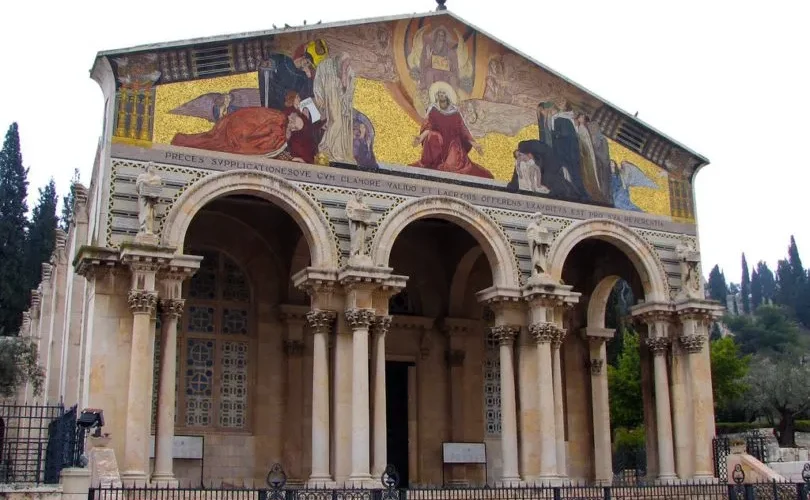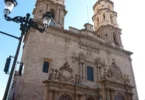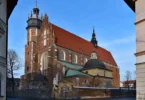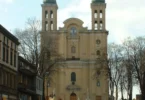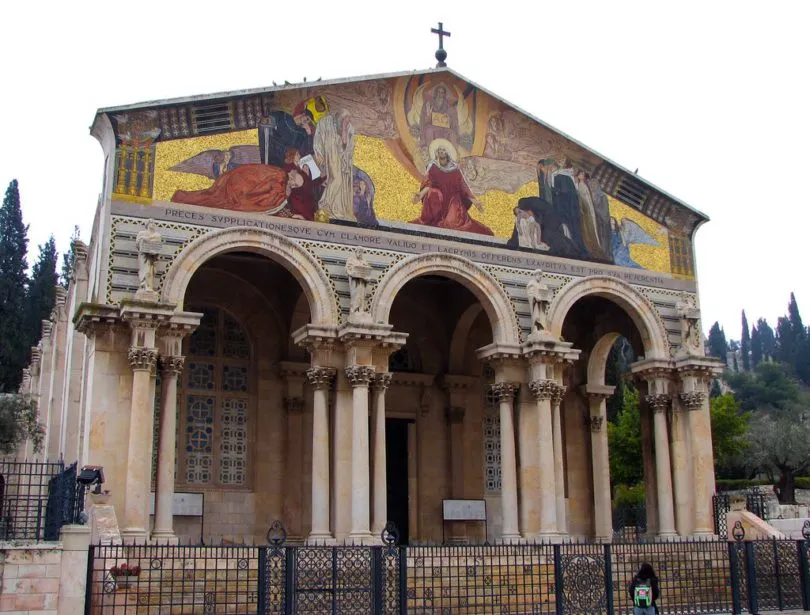
Introduction
Sanctuary of Gethsemane is located at the foot of the Mount of Olives in Jerusalem. It holds immense religious significance for Christians all over the world, making it an important pilgrimage site. According to the Bible, this was the garden where Jesus went to pray with his disciples on the night of his arrest, and where he was betrayed by Judas.
Today, the sanctuary is a beautiful complex that includes the Church of All Nations, which houses the rock where Jesus was said to have prayed, and the olive grove where he was arrested. The biblical text of the New Testament Gospel accounts tells us that the Garden of Gethsemane was a favorite rural location that Jesus and His disciples visited more than once, and probably many times.
Not only was it a suitable place for private prayer and fellowship for this tight band of disciples looking for solace away from the hustle and bustle and curious ears of the big city, but it also was conveniently located by the path leading from Jerusalem and the Temple to the villages of Bethany and Bethpage which Jesus often visited.
It was at the Garden of Gethsemane that Jesus spent His final hours and prayed His final prayers just before He was betrayed and arrested.
Within hours of his dramatic arrest, He faced a compromised and politicized Sanhedrin court was condemned to death for the sin of blasphemy, and was crucified outside of the walls of Jerusalem.
It is the divine, unfathomable agony, and the eternal consequences of these events, that gave the Garden of Gethsemane its significance and renown worldwide.
These trees are standing silent and immovable as living witnesses to the timeless story of Jesus and the miraculous events of the night of His prayer vigil, betrayal, and arrest leading up to His crucifixion.
Gethsemane’s history dates back to the fourth century when the Basilica of Gethsemane was constructed during the reign of Theodosius I. However, in 614, Chosroes II of Persia destroyed it. Over the centuries, the church has been rebuilt on several occasions. The Georgian Lectionary (7th-8th centuries) testifies that worship on the site continued despite the destruction.
In the 10th century, the Annals of Eutychius confirm the construction of the church by Theodosius I. The Chronicle of Theophanes Confessor mentions that Caliph Abd al-Malik planned to remove the columns from the church, but a noble Christian dissuaded him from doing so. The Basilica of Gethsemane was destroyed in a massive fire, and the situation regarding its ruins before the Crusader period remains unclear.
Thanks to the excavation of the foundation for the modern church, the ancient ruins of the Byzantine-era church below the Crusader-era church came to light. The architect in charge of the construction works of the modern church, Antonio Barluzzi, discovered them in the early 20th century.
The remains of the Byzantine-era church in Gethsemane, described by Saint Helen, were considered lost, and Barluzzi’s discovery created a sensation. The underground church helped confirm the authenticity of the Gospel accounts, and many believe it played a vital role in the preparation of Jesus’ disciples before the crucifixion. The new construction stands as testimony to the tumultuous and thrilling history of the Holy Land.
Architecture and Design of the Gethsemane Church
Architecture and Design of the Gethsemane Church As you step inside the Basilica of Gethsemane, you are greeted with a spacious atrium formed by three large archways held up by pillars flanked by monolithic columns with Corinthian capitals. As you glance around, you’ll notice how the columns are decorated with designs that call back to those of the original Byzantine church.
Add to this the statues of the four Evangelists by Tonnini and the attention is drawn to the magnificently sparkling mosaic of colored tesserae on a golden background that graces the tympanum of the church’s facade. Moving on to the church interior, you’ll notice the absence of excessive ornamentation, with only two rows of six rose-colored columns echoing the layout of the original Byzantine church.
The ceiling of the church is divided into twelve equally-sized domes supported by the columns, inviting the attention of all who enter to the central point of focus. This symbolism ties into Jesus as the spiritual center of the Christian faith. Descending down the steps to the Grotto of Gethsemane, one is struck by the plastered rock construction skillfully supported by natural and artificially shaped pillars.
The efforts of Franciscan archaeologists, the painted vault from the Crusader era has been preserved, with remains of frescoes and numerous graffiti left by pilgrims that can still be seen today. The three paintings enclosed in squares on the vault depict Jesus praying in the garden, Christ with the Apostles, and the Angel comforting Jesus, all of which form part of the Crusader decoration of the vault.
The most significant feature of the Grotto, however, is its tombs, inscriptions, and paintings. A Latin inscription consisting of three rows of capital letters in white on a red and black background is painted on the vault on the right of the presbytery. The fresco paintings are the works of artist Umberto Noni.
Alongside the frescoes, visitors can observe part of the ancient cistern, an opening in the floor, and arcosolium (“bench” type) tomb, and the remnants of the Byzantine entrance to the Grotto, where Christian worship on the site has continued from the 7th to 8th centuries, including during the Caliph Abd al-Malik’s attempts to displace the building’s columns.
The restoration of the Grotto during Jubilee 2000 shed light on the presence of walled tombs within the cistern and underlined the architectural ingenuity employed in its construction. From the atrium’s decorations, the church’s twelve domes, the Crusader-era frescoes on the ancient vault, to the Byzantine cistern-turned-tomb, the Basilica of Gethsemane remains a testament to the intricacy of faith, architecture, and human history.
Facade and Portico
Above a monumental staircase rises the façade of the church, which overlooks the Kidron Valley directly across from the ancient Golden Gate that opens along the battlemented walls of Jerusalem.
The atrium (courtyard) of the church is formed by three large archways supported by pillars flanked by monolithic columns, which are decorated with Corinthian capitals evoking those of the original Byzantine church. On the cornice, near the columns, statues of the four Evangelists made by Tonnini stand out.
The attention of the visitor is drawn to the magnificent mosaic of sparkling, colored tesserae on a golden background that adorns the tympanum. The decoration, the work of Giulio Bargellini and carried out by the company Monticelli in 1930, is a hymn to Jesus, represented as the mediator between God and man. Mankind is divided into two groups: on the left are the wise who lament their limits, and on the right are the simple and the afflicted.
Both groups are kneeling in prayer before Jesus who receives the pleas of all humanity with open arms and, raising his head, commends them to the Father, the beginning and end of all things. An angel to the right of Jesus receives his heart, full of suffering for humanity. Below the scene is a verse from the Letter to the Hebrews which accompanies and clarifies the theological objective of the mosaic: “PRECES SUPPLICATIONESQUE CUM CLAMORE VALIDO ET LACRYMIS OFFERENS EXAUDITUS EST PRO SUA REVERENTIA” (“He offered prayers and supplications with loud cries and tears and he was heard because of his reverence”; cf. Heb 5:7).
The rock of the Agony of Jesus
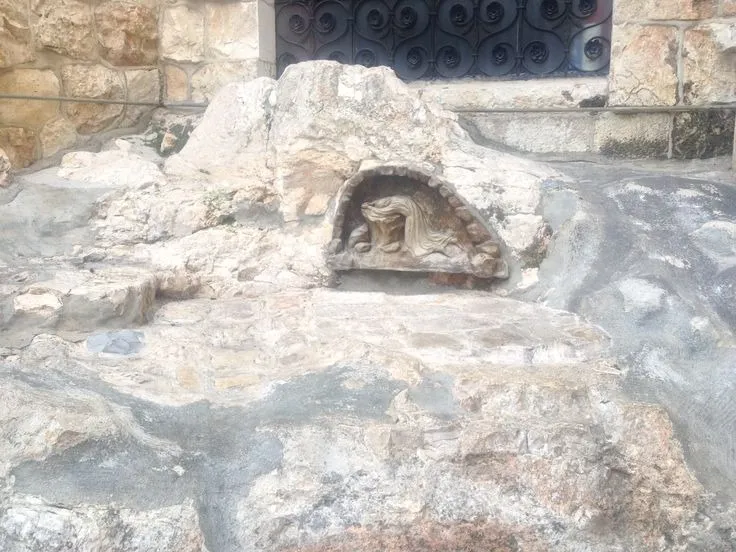
The centerpiece of the church is the bare rock, left exposed for veneration, a practice that was common to many Holy Places and which dates back to ancient times. Indeed, since at least the end of the 14th century pilgrims to Gethsemane have customarily prostrated themselves before the “Rock of the Apostles”, where Peter, James and John were said to have fallen asleep during Jesus’ agony, and which today can still be seen outside in the area behind the church. But this type of veneration must have existed even earlier if, as now appears, in both the Byzantine and Crusader churches the bare rock had been left in view inside the building so that the faithful could touch the very stone that had witnessed Jesus’ suffering and sweating of blood .
Pilgrims today are still able to touch and venerate the bare rock that can be seen in the presbytery beyond an early-Christian style balustrade separating the presbytery from the nave. The rock, which after nearly a century of homage is beginning to show traces of the veneration it has been the object of, is enclosed within a braided crown of thorns, about 30 cm high, made from wrought iron and silver and slightly inclined towards the rock. The work, by the artist Alberto Gerardi, features two dying doves in silver decorating the corners and three chalices on the three sides of the enclosure, from each one of which two doves are drinking: the symbolism of the work alludes to the Passion of Christ and his martyrdom.
In the apse is preserved natural rock, bearing antique chisel marks, on which the walls of the church rest. One can still see several of the stones from the Theodosian church, found during the archaeological excavations, which preserve traces of the ancient rainwater drainage channel: one in the apse to the right and two in the one to the left.
The Grotto of Gethsemane
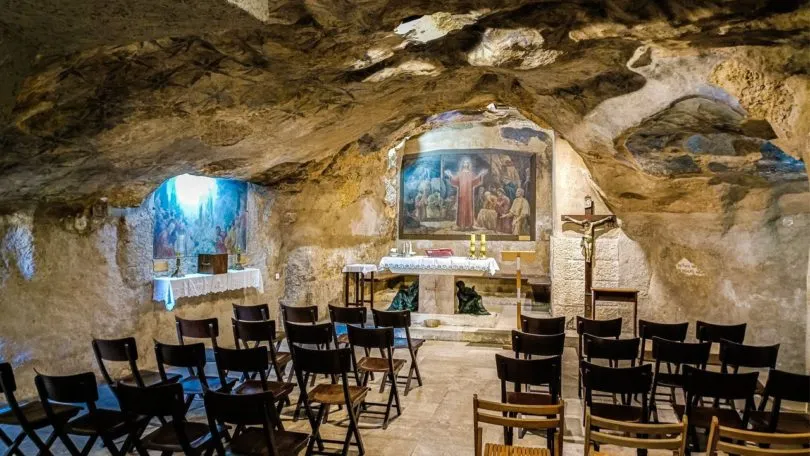
About 100 meters north from the garden the visitor will find the Grotto of Gethsemane, the historical traditional spot where Jesus and his disciples are believed to have often stayed at night during their visits. Scholars believe that it was in this natural grotto that the disciples slept while Jesus prayed His famous prayer.
This grotto, about 190 square meters in size, has been mostly unchanged since the time of Jesus. It is also believed to be the spot where Jesus was betrayed and arrested, and possibly the location of His secret meeting with Nicodemus as recorded in the Gospel of john.
Wall decorations in the grotto describe the prayer of Jesus and the betrayal kiss of Judas, while the bronze figures beneath the altar portray the sleeping disciples.
It was in the 4th Century AD that the grotto first became a formal chapel, and nearly 40 graves, mainly from the 5th to 8th Centuries AD, have been discovered in the area.
The ancient wall inscriptions have been interpreted to (probably) say, “Here … The King sweated blood;” “Christ the Saviour frequented this place with his apostles;” and “My Father, if it is your wish, let this chalice pass from me.”
The Church of All Nations
Right next to the Garden of Gethsemane the visitors will find the impressive Church of All Nations (also called “The Basilica of the Agony”). The Church is actually constructed around a slab of rock where Jesus is believed to have been praying on that holy night so long ago.
Designed by the famous architect Antonio Berluzzi and built in 1924 with funds from various Christian communities from all over the world, the Church bears the name “Church of all nations” in honor of the generosity and commitment of so many.
Prominent and easily recognized by its stunning gold and colorful tympanum mosaic decorations above its main entrance, this beautiful art depicts Jesus and His followers. A much older Byzantine church building that dates back to the 4th Century AD has been incorporated into the modern-day structure, and once inside the impressive indoor space, visitors can see a portion of the original Byzantine mosaic floor and the famous rock where Jesus is believed to have prayed.
The Tomb of Mary
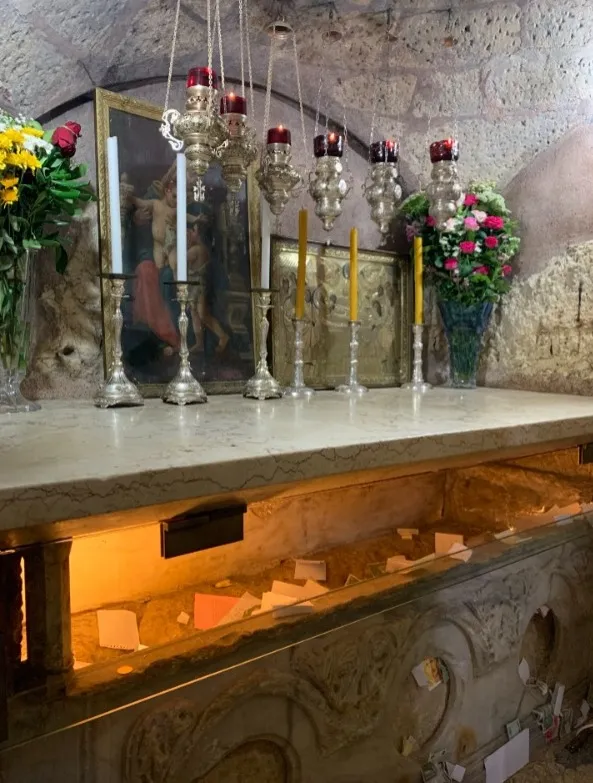
Near the grotto, the visitor will find the traditional site of the Tomb of Mary, where the Mother of Jesus is believed to have been buried after she “fell asleep” in death. All these sites are together referred to by many today as “Gethsemane,” and they are maintained and operated by the gracious servants of the Franciscan Church.
Feasts and Celebrations during the year
- Lenten Season:Second week of Lent – Pilgrimage with Solemn Mass
- Holy Week: Wednesday – Solemn Mass with singing of the Passion; Thursday – Holy Hour
- Solemnity of the Precious Blood of Jesus – 1 July
- Solemnity of the Assumption of the Blessed Virgin Mary– 14/15 August
Mass Timing
- Each day at 6:00 am (in italian), sunday at 7:00 am
- Each Thursday at 04.00 pm (in Italian).
- Sunday Mass is followed by the Eucharistic adoration
Contact Info
Gethsemane,
Jerusalem, Israel
Phone No.
Phone: +972 2-626-6444
Accommodations
How to reach the Sanctuary
Airway
Ben Gurion Airport (International airport) is the nearest airport which is 53 kilometers away form the Sanctuary of Gethsemane
Railway
Damascus Gate is the nearest railway station which is 1.6 kilometer from the Sanctuary of Gethsemane

